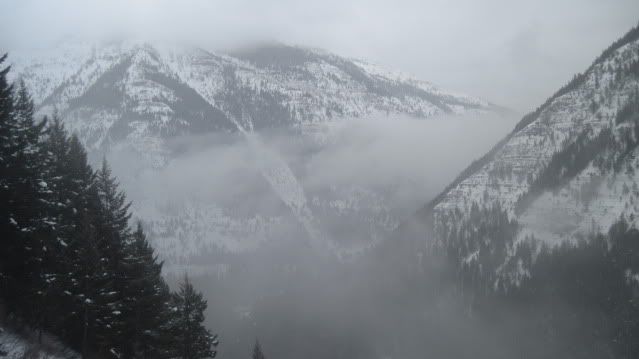"How does it happen that the life of the open accepts the order of nature so unprotestingly and goes its way to death without a sound, while the life of the city shudders and screams at the bare prospect? Is not each, in measure, the product of its environment, and has not each been partly fashioned by its surroundings? Had man always lived in the open and maintained a healthy animalism, he would perhaps have been better advised. He was born and equipped as an excellent animal, but he sold his birthright for a mess of pottage called culture and took on fear and a whimper as a part of the bargain."
--The Open Spaces: Incidents of Nights and Days Under the Blue Sky, by John C. Van Dyke (1922)

(Marias Pass)
I met a cross-country skier on Marias Pass who gave me very specific directions on the best way to approach Snowslip. The directions turned out to be near complete fiction.

(Wrong way attempt on Snowslip, thanks to a generous soul in East Glacier.)
Such misleadings I've found to be common in Montana. A friend once swore up and down there was no way to float my 17-foot kayak through the Upper Clearwater--and later the boss I had at the time, an accomplished outdoors person, agreed. Turns out I practically could have done it sideways. Later I worked with a guy who gave all sorts of advice about skiing in a nearby mountain range; he even wrote an article for the local newspaper about backcountry skiing possibilities which is run every fall. Near as I could tell his advice was based on mapreading, not actual reconnoitering, and I'm sure he'd never once been to any of the places he was describing to me.

(Groundtruthing in Glacier National Park.)

(Elk Mountain. I should have figured my Snowslip directions were faulty when the adviser casually mentioned that he had climbed this mountain in three hours. On skis. Starting at U.S. 2.)



